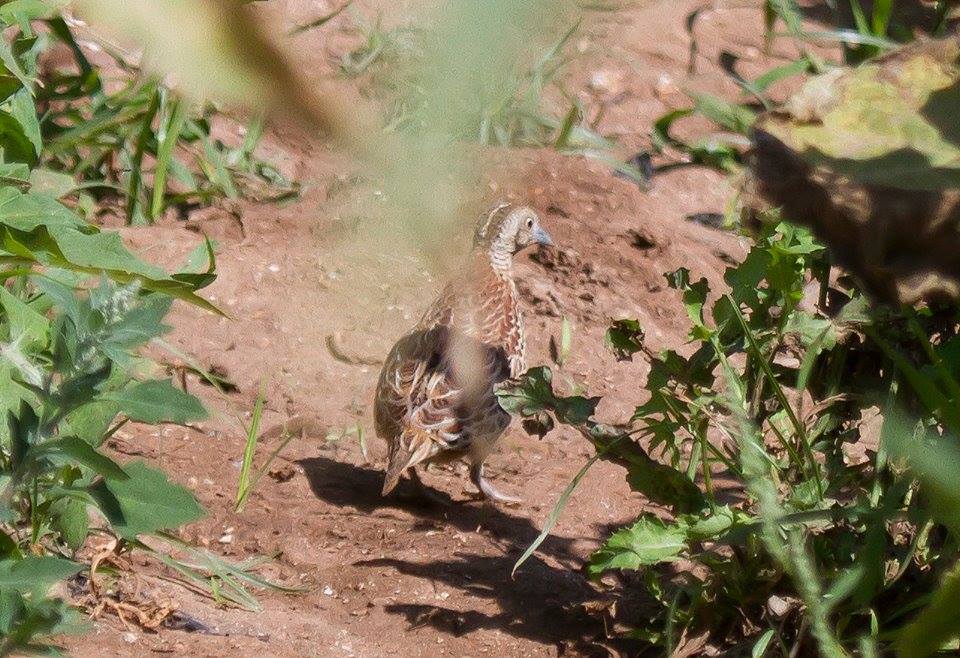The Spanish Government officially declared the Andalusian Buttonquail as extinct in Spain. This is the first bird species to go extinct in Europe since the extinction of the Great Auk (Pinguinus impennis) almost 170 years ago.
There are, however, some differences between the two extinctions. The Great Auk is lost forever, whereas the Andalusian Buttonquail still exists in Morocco. Moreover, other subspecies of the Common Buttonquail are widely distributed in Africa south of the Sahara and Asia. Note also that the Slender-billed Curlew (Numenius tenuirostris) is not taken into consideration because it’s still officially classified as “Critically Endangered”.
Last Andalusian Buttonquail seen in Spain was in 1981
The last bird of the Andalusian Buttonquail (Turnix sylvaticus sylvaticus) seen with certainty in Spain – and thus in Europe – is an individual killed near Doñana on 3 December 1981. Its carcass is preserved in the collection of the Doñana Biological Station. Over the years, some people claimed they heard the species’ song (or seen its tracks), but such claims have not been accepted.
During the last two decades, exhaustive searches were carried out in Andalusia in the hope of finding the species. These searches were carried out mainly by scientists of the Doñana Biological Station in collaboration with the Regional Government of Andalusia, but also by volunteers and small local NOGs such as COCN (Colectivo Ornitológico Cigüeña Negra) for example. But unfortunately, all of these searches were unsuccessful.
The expected outcome of these unsuccessful searches is that a decision has to be taken at the regional and central level to declare the extinction of the species. And that’s exactly what happened.

The consequences of the ‘extinction lebel’
Last August, the Ministry for the Ecological Transition of the Spanish Government approval and published in the Official State Gazette a list of extinct species in Spain. This list of about 30 species of different life branches included 8 bird species: Hazel Grouse (Tetrastes bonasia), Black Grouse (Lyrurus tetrix), Rock Partridge (Alectoris graeca), Demoiselle Crane (Anthropoides virgo), Andalusian Buttonquail, plus the breeding populations of Common Crane (Grus grus), White-tailed Eagle (Haliaeetus albicilla) and Lanner Falcon (Falco biarmicus).
What does this mean? Or, why officially declaring the extinction of the species is important? It is because this opens the doors to the reintroduction of the listed species into the country.
The official publication of this list of extinct species does not imply a change in the legal conservation status of the affected species as established by the relevant Spanish law. To the contrary, the species included in this list are considered eligible to benefice from reintroduction projects authorized by the competent administrations.
Regarding the Andalusian Buttonquail, any future reintroduction of the species into Spain must be from the Mediterranean population which is currently only present in Morocco. I understand that an earlier suggestion to introduce the species from sub-Saharan Africa (Pertoldi et al. 2006) is totally discarded after the re-discovery of the Moroccan population (Gutiérrez et al. 2011).
Everybody knows now that the recovery of the Andalusian Buttonquail in Spain passes, inevitably, by its recovery in Morocco. The bad news, however, is that the Moroccan population is in a critical situation. A detailed survey in June 2014 (in which I took part) found that the situation has worsened since the last census carried out some years earlier (unpublished data). The photos below were taken during that fieldwork.
Sorry about the negative tone of this blog-post, but we don’t live in an ideal world and this is the truth.
References:
Gutiérrez, C., Copete, J.L., Crochet, P.-A., Qninba, A. & Garrido, H. 2011. History, status and distribution of Andalusian Buttonquail in the WP. Dutch Birding 33: 75-93.
Pertoldi, C., Negro, J.J., Muñoz, J., Barbanera, F. & Garrido, H. 2006. Introduction or reintroduction? Last resorts for the latest bird to become extinct in Europe, the Andalusian hemipode Turnix sylvatica sylvatica. Biodiversity & Conservation 15: 3895-3908.
Updates:
The unpublished data mentioned above which showed the decline of the Moroccan population is published in 2019. Read about is here: Andalusian Buttonquail in Morocco is declining.
Read also:
Andalusian Buttonquail observed in Algeria for the first time in almost three decades.

Note about the species name:
Nowadays the species is known globally as Common Buttonquail or Small Buttonquail, and the name ‘Andalusian Buttonquail’ is reserved for the Mediterranean population. The ‘Andalusian Hemipode’ is particularly still preferred by many birders in Europe. Similarly, it’s known in French by two names: Turnix d’Andalousie or Turnix mugissant. In Spanish in has only one name: Torillo andaluz. In Morocco, it’s known by a native name different from the name you seen in the Arabic Wikipedia.
